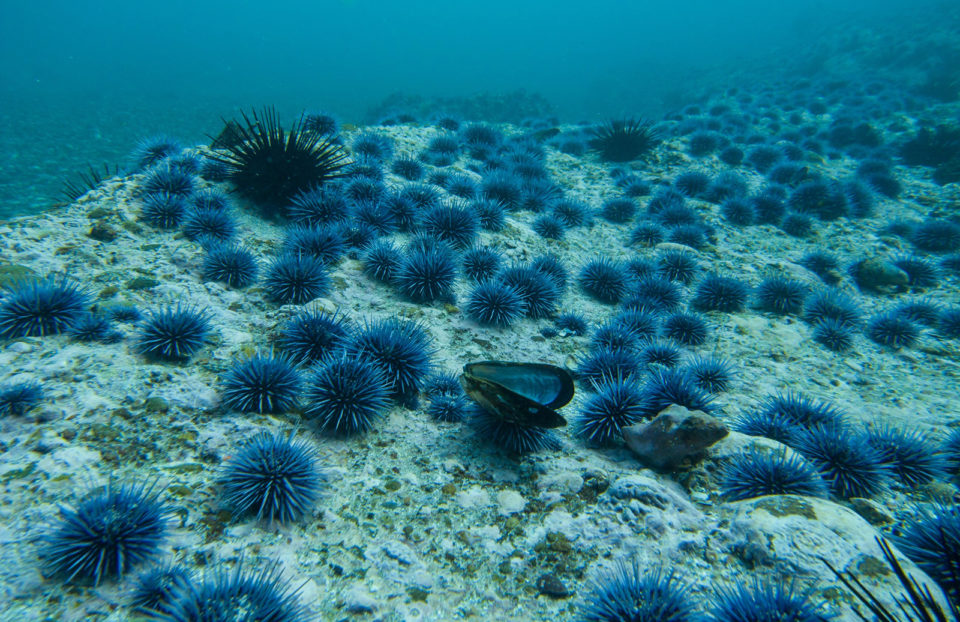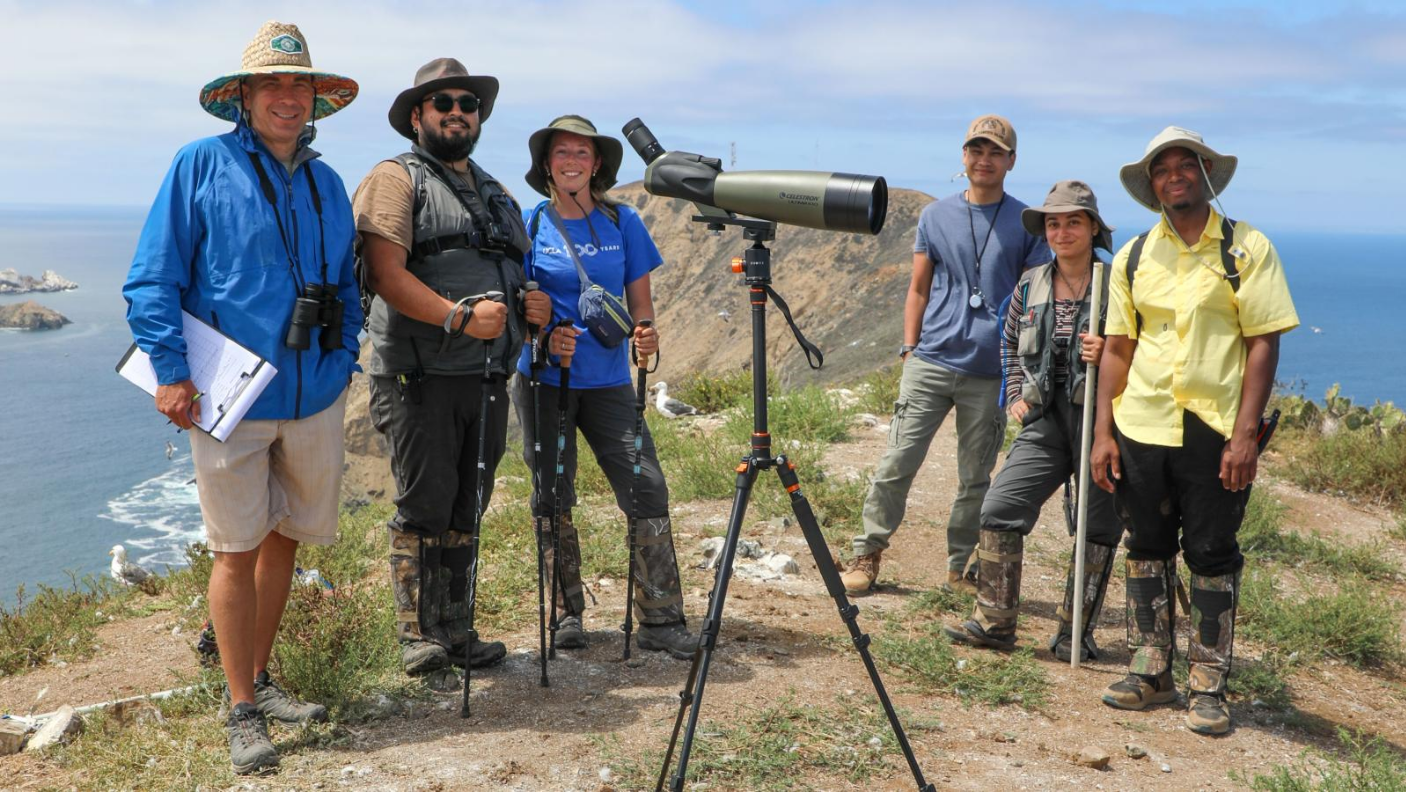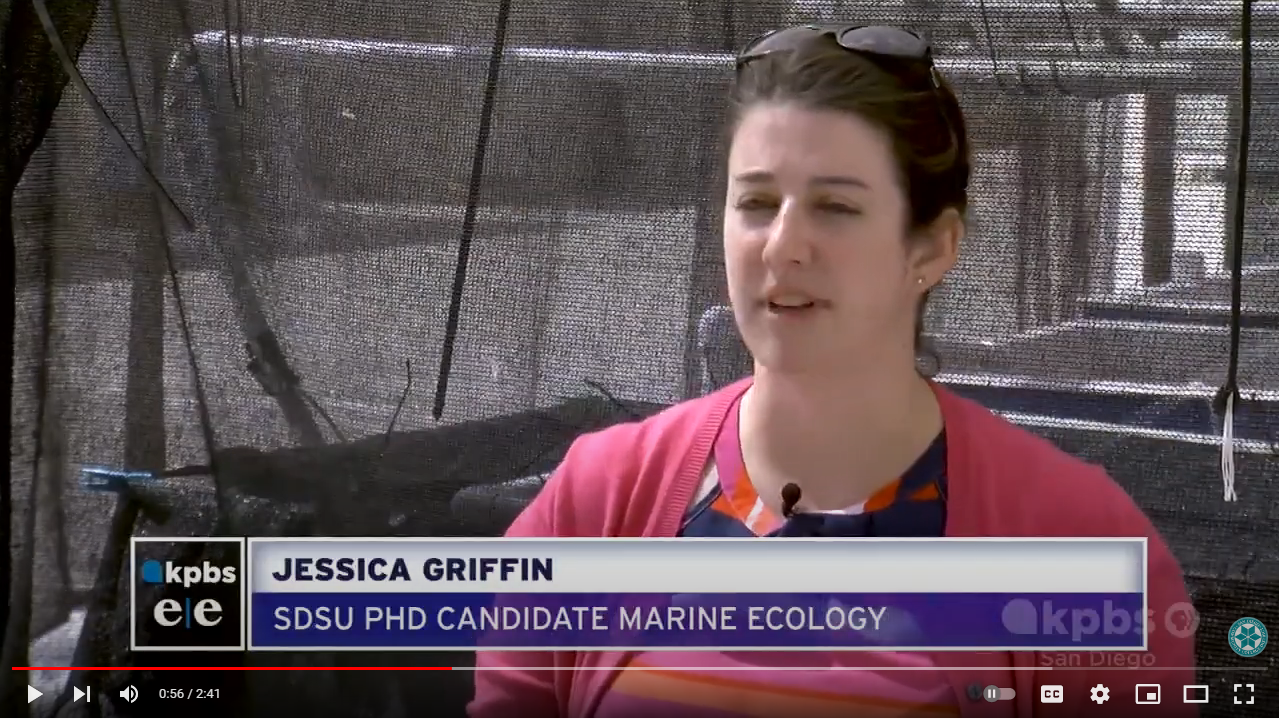Spotlight on Research
Of Fin and Feather: Understanding the Impacts of Fish Farms on Neighboring Ecosystems
Connecting the dots between snakes, birds, and fish pens, SDSU scientists formulated a compelling question they hadn’t yet considered – Could aquaculture be beneficial to island restoration? The Long Lab travel to the Coronado Islands off the coast of Baja California to investigate.
By Alex Warneke
Could disease epidemics have cascading impacts on coastal kelp forests?
Recently graduated Ph.D. student, Lynne Wetmore, examines the effects of sea star wasting epidemics on regional Tegula populations to determine whether certain types of kelp forest habitat may be more vulnerable to overgrazing.
By CSU COAST
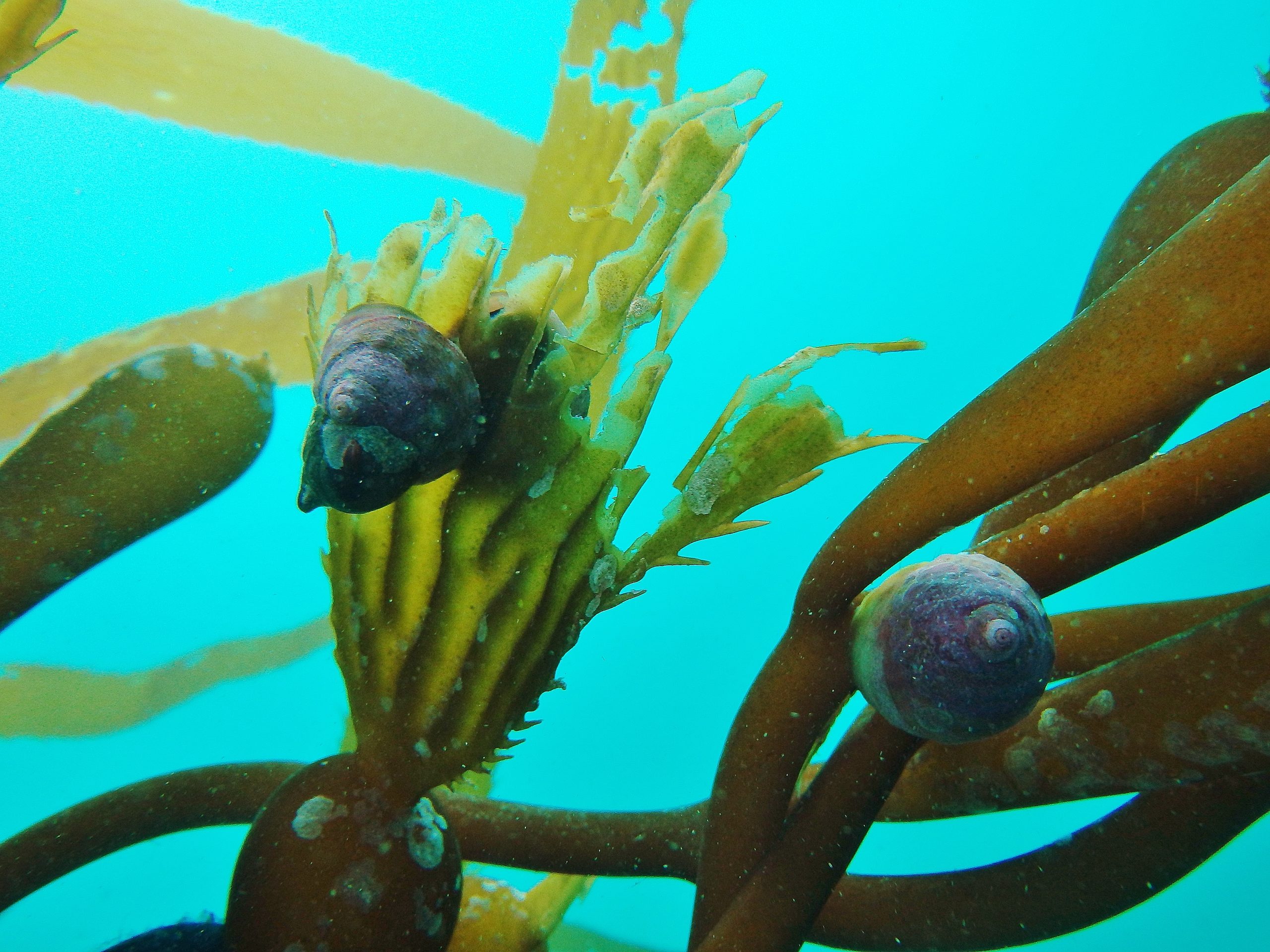
San Diego Mesa College Students Participate in Summer Internship for Second Year in a Row
Ph.D. candidate Jessica Griffin leads a cooperative program where community college interns work with with San Diego State University graduate students to gain hands-on experience in marine science research.
By M.G. Perez, KPBS News
SDSU Researchers Join Fight to Save the Coral
Ph.D. candidate Jason Baer and the Rohwer Lab team are deploying first-of-their-kind floating structures in an attempt to rebuild reefs damaged by climate change, overfishing, or tourism.
By Delaney Weidner, San Diego State Univeristy

Rare coral-like algae, rhodoliths build habitat on the ocean floor
Rhodoliths are red, coral-like algae that form hard balls that roll around the ocean floor and join to form unique ecosystems that are fairly rare. The Edwards Kelp Ecology Lab and partners have been investigating the rhodolith beds at Catalina Island and the effects of mooring disturbance to these foundational habitats.
By Katherine Leitzell, California Sea Grant
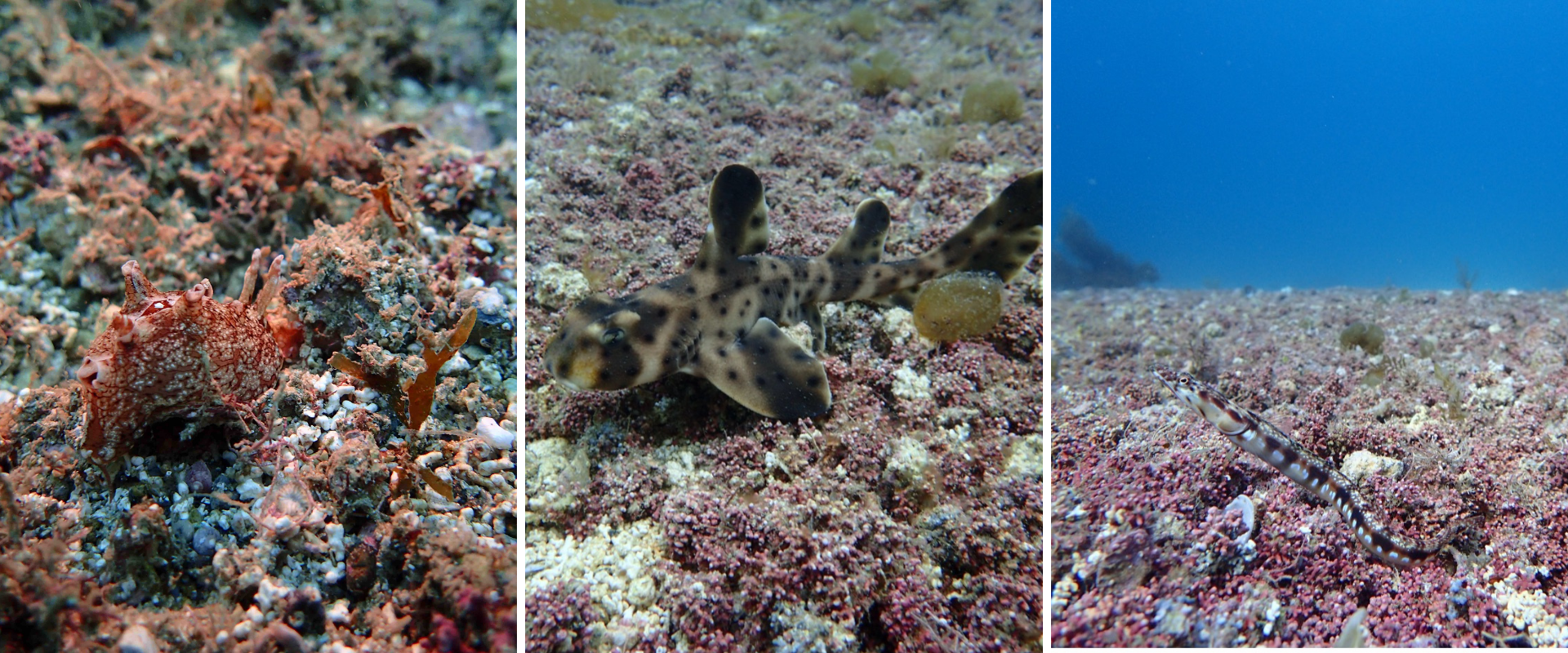
Oysters to Serve as Biological Sensors in San Diego Estuaries
The Miller Lab is using oysters equipped with sensors to monitor local estuaries for important environmental parameters.
By Erik Anderson, KPBS News
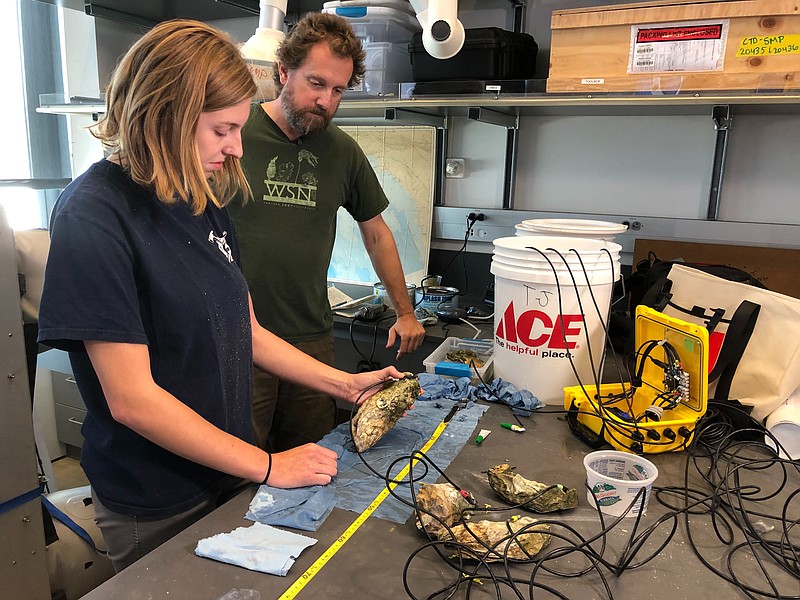
Handheld DNA tester can quickly identify illegal shark fins
Tens of millions of sharks are killed every year for fin trade, primarily destined to become shark fin soup. Unfortunately, once the fin is removed, it can be nearly impossoble to determine whether they are from a protected species. The Dinsdale Lab have developed a technique to rapidly identify tissue samples using a MinION device. The device, which has been used for detecting Ebola and genetically profiling tumors, is now being put toward fighting wildlife crime.
By Joshua Rapp Learn, National Geographic
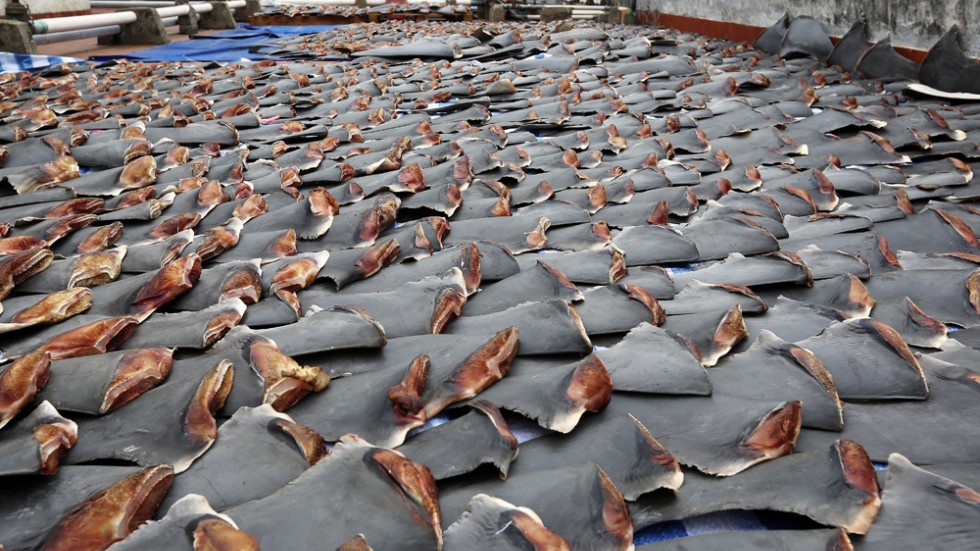
With otters away, what keeps urchins at bay?
California sheephead and spiny lobsters may be helping to control sea urchin populations in Southern California kelp forests, where sea otters — a top urchin predator — have long been missing, according to a new study published in the journal Ecology. The research by the Hovel Marine Conservation Ecology Lab provides new insight into the complex predator-prey relationships in kelp forests that can be seen in the absence of sea otters.
By Tayler Tharaldson, 2019 California Sea Grant Science Communications Fellow
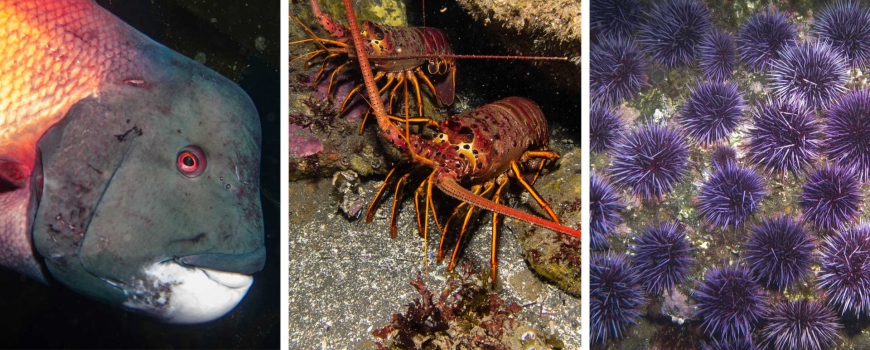
Can ranching ‘zombie urchins’ boost uni, save kelp forests?
Collaborative aquaculture research between Urchinomics and SDSU researchers Renee Angwin, Brian Hentschel, and Todd Anderson aims to preserve dwindling kelp forest and boost rural communities while tapping into the lucrative uni market.
By James Wright, Global Aquaculture Alliance
